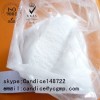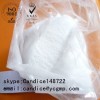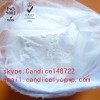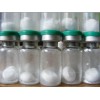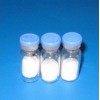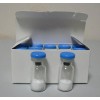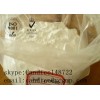GHRP-6 and the Growth Hormone Secretagogue Receptor
Quick Details:
Sequence: His-D-Trp-Ala-Trp-D-Phe-Lys-NH2
Molecular formula: C46H56N12O6
Molar Mass: 873.014
CAS number: 87616-84-0
PubChem: 5486806
Synonyms: Growth Hormone Releasing Peptide-6; GHRP6; GHRP 6
Product Description:
Growth Hormone Releasing Hexapeptide
Investigations reported that GHRP-6 is more efficient than GHRH itself in monkeys and performs synergistically when combined or applied together. An example of this combination would be GHRP-2 and CJC-1295. GHRP-6 is believed to be acting naturally on both pituitary and hypothalamic sites (Fairhall et al. 1995). In a time-dependent and dose-dependent manner, the primary pituitary cells of rats were demonstrated on. From the studies, the concentrations of the GHRP-6 needed for the half-maximal and maximal stimulation were 7 x 10(-9) and 10(-7) M, respectively.
GHRP-6 and the Growth Hormone Secretagogue Receptor
GHRPs are not simply surrogates of GHRH, instead GHRP-6 is an artificial activator of a separate newly discovered receptor called Growth Hormone Secretagogue Receptor (GHS-R). Soon Ghrelin was discovered, the endogenous ligand that binds to the GHS-R. Both Ghrelin and all the synthetic compounds such as GHRP-6 were termed "Growth Hormone Secretagogues" (GHSs). One side effect of GHRP-6 is a significant increase in appetite due to stimulating the release of Ghrelin, a peptide that is released naturally in the lining of the stomach that increases hunger and gastric emptying. Also, GHRP-6 causes stimulation of the anterior pituitary gland which causes an increase in Growth Hormone release. The increased amounts of Growth Hormone can cause the liver to secrete the hormone IGF-1, which improves the animal body’s ability to burn fat and build muscle. Since GHRP-6 acts directly on the feedback loop which signals the inhibition of Growth Hormone release, GHRP-6 can re-stimulate the production of Growth Hormone.








